5 Amazing Reasons to Visit Wenshu Monastery Chengdu: A 1400-Year-Old Zen Oasis
- A Journey Through Time: The Rich History of Wenshu Monastery
- Architectural Splendor: Exploring the Layout of Wenshu Monastery
- Top 5 In-Depth Experiences at Chengdu's Wenshu Monastery
- A Food Lover's Guide to the Wenshu Monastery Area
- Essential Visitor Information for Wenshu Monastery
- Getting to Wenshu Monastery Chengdu
- Important Tips for Your Visit
- Plan Your Day
If you’re looking for an authentic cultural experience in Chengdu, look no further than the historic Wenshu Monastery Chengdu. Designated as a key Buddhist temple in the Han Chinese region, this sacred site seamlessly blends ancient Zen serenity with the vibrant local life, offering a unique glimpse into the city’s soul. For anyone planning their Chengdu travel itinerary, this temple is an essential stop. This comprehensive Chengdu travel guide will walk you through everything you need to know to plan your perfect visit to this must-see Chengdu attraction.
A Journey Through Time: The Rich History of Wenshu Monastery
The story of Wenshu Monastery begins in the Sui Dynasty, between 605 and 617 AD. Majorly renovated in 1697 during the Qing Dynasty, it boasts a rich history spanning over 1,400 years. This incredible longevity makes it not only the oldest but also the most well-preserved Buddhist temple complex in Chengdu. Walking its grounds is like stepping back in time, and it’s a key reason many travelers find Chengdu worth visiting.
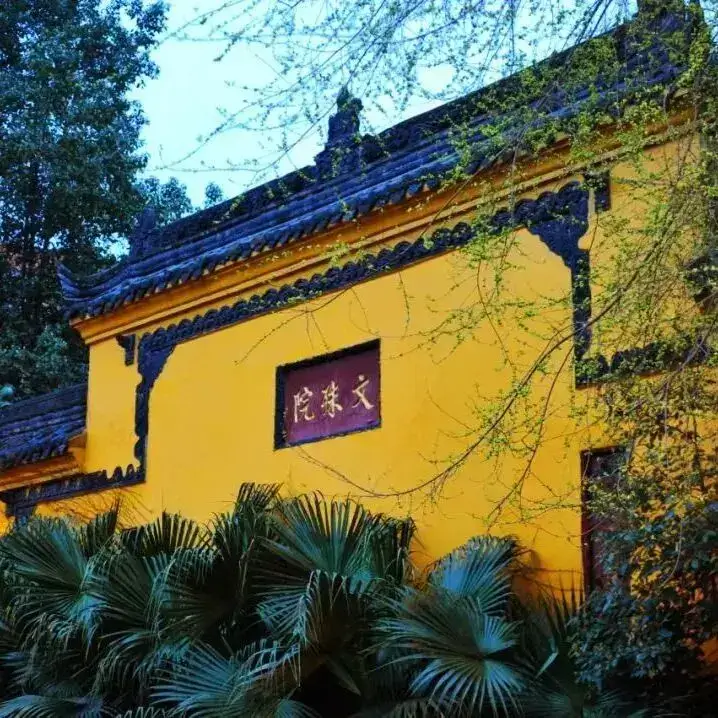

Architectural Splendor: Exploring the Layout of Wenshu Monastery
The Wenshu Monastery complex is vast, covering over 90 mu (approximately 1,667 acres) with a floor area of about 20,000 square meters. Its layout is a masterpiece of traditional Chinese temple architecture, characterized by a rigorous and symmetrical design along a central axis. Exploring this architecture is one of the top things to do in Chengdu for culture enthusiasts.
Recommended Tour Route:
South Gate Entrance
Free Incense Collection Area
Three Sages Hall (featuring Manjushri, Samantabhadra, and Avalokitesvara)
Main Hall (the most magnificent building)
Dharma Hall
Sutra Library (housing precious Buddhist texts)
Jade Buddha Hall (home to precious jade Buddha statues)
Yuantong Hall
Forest of Steles
Thousand Buddha Pagoda (a fantastic photo spot)
North Gate Exit
Red Wall Photo Spot
Top 5 In-Depth Experiences at Chengdu’s Wenshu Monastery
1.The Iconic Red Wall Photography Experience
The vibrant red walls flanking the main gate of Wenshu Monastery are one of Chengdu’s most famous photo backdrops. The giant Chinese characters for “Happiness” and “Peace” are incredibly popular.
Pro Tips: Visit between 9:00-11:00 AM or 3:00-5:00 PM for the best light. Wearing Hanfu, traditional attire, or plain-colored clothing creates a stunning contrast.

2.Free Guided Tours
Enhance your visit by joining a free guided tour. Available three times daily (check at the Legal Affairs Office for times), these tours provide deep insights into the Wenshu Monastery’s uniqueness, Buddhist culture, and architectural artistry.
3.Lighting Lanterns for Blessings
Participating in this traditional ritual is a serene and popular activity for visitors to Wenshu Monastery.
Price: 15 RMB (approximately US$2) per lantern.
Custom: Lighting three lanterns, representing the Buddha, Dharma, and Sangha, is a common practice symbolizing inner illumination.
4.Savoring Vegetarian Cuisine at the Monastery
Tucked within the tranquil grounds of Wenshu Monastery, Xiangyuan Vegetarian Restaurant is a hidden gem. It offers a different but equally delicious perspective on the city’s famed culinary scene, which is famously known for Chengdu hot pot and other spicy delicacies.
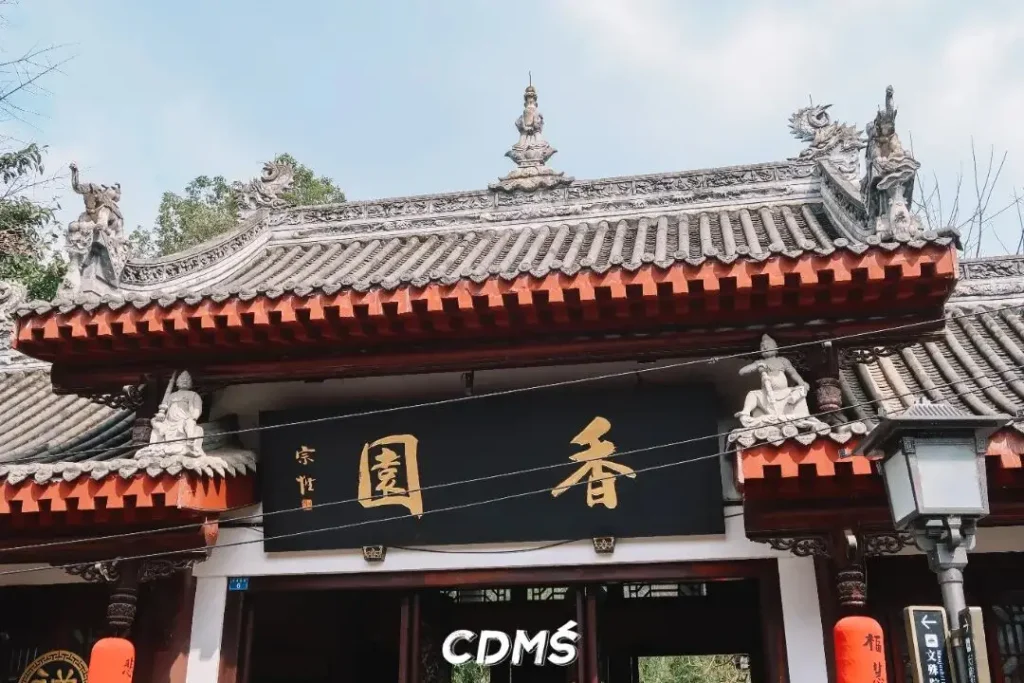
Must-Try: Zen Yuan Maocai (19 RMB / ~US$2.70). This spicy and flavorful hot pot-style dish uses no onions or garlic, adhering to Buddhist vegetarian principles.
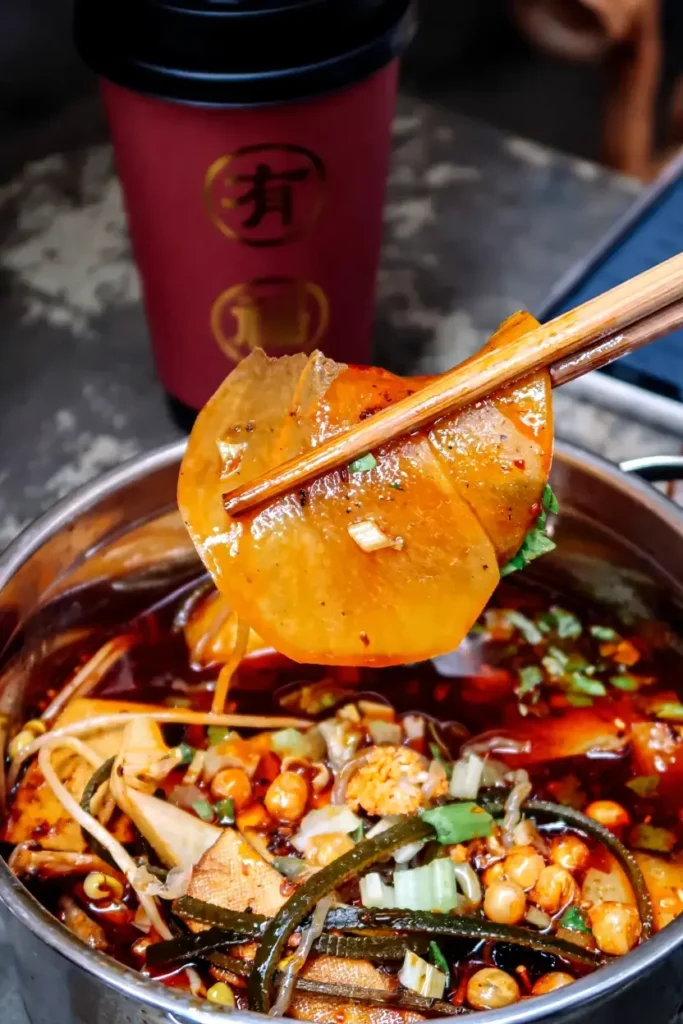
Hours: 11:30 AM – 2:00 PM; 4:00 PM – 8:00 PM.
5.Experiencing Chengdu’s Teahouse Culture
No visit to the Wenshu Monastery area is complete without experiencing traditional Chengdu teahouse culture. Sit down with a “gaiwan” (lidded bowl) of tea and soak in the slow pace of life. This is a quintessential experience for anyone wondering what to do in Chengdu beyond the main tourist sites.
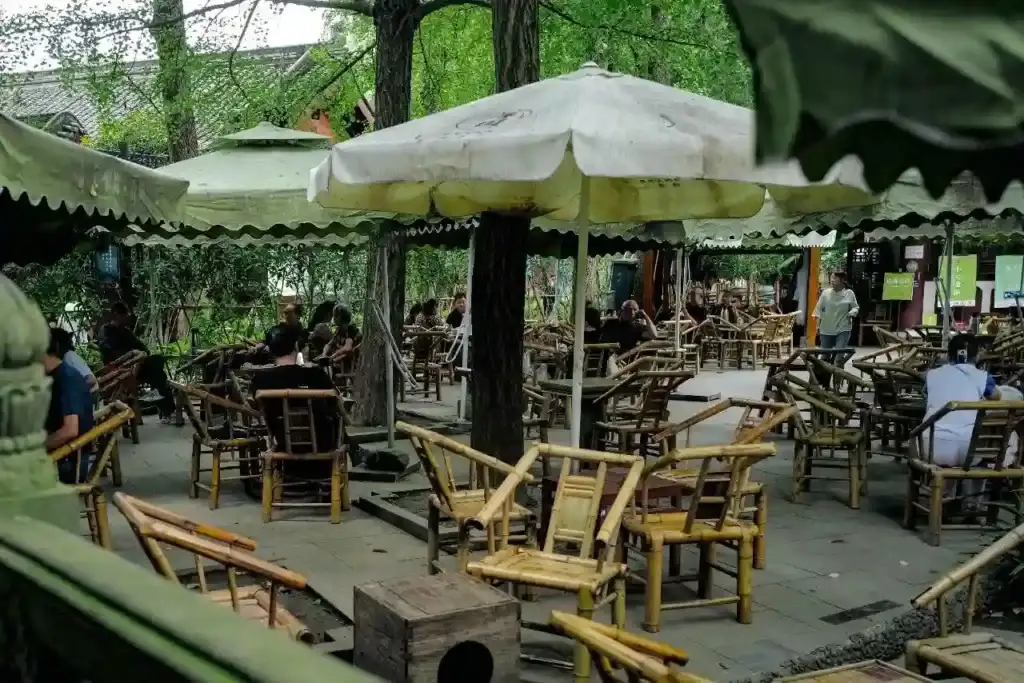
Recommended Tea: Bitan Piaoxue, a fragrant jasmine tea.
Location: Several teahouses are within the adjacent Wenshufang cultural street.
A Food Lover’s Guide to the Wenshu Monastery Area
The area surrounding Wenshu Monastery is a paradise for foodies, offering everything from classic snacks to full meals. It’s a fantastic introduction to what Chengdu is famous for food.
Inside the Monastery:
Xiangyuan Vegetarian Restaurant: As mentioned above, for authentic monastic Maocai.
Classic Chengdu Noodles & Snacks:
Zhang Laoer Liangfen: Famous for its sweet water noodles (10-20 RMB / ~US$1.40-2.90).
Tan’s Plain Noodles: A long-established shop inside the monastery, known for its unique fermented glutinous rice noodles.
Ni Tofu Pudding: Specializes in spicy and tender tofu pudding dishes (around 20 RMB / ~US$2.90).
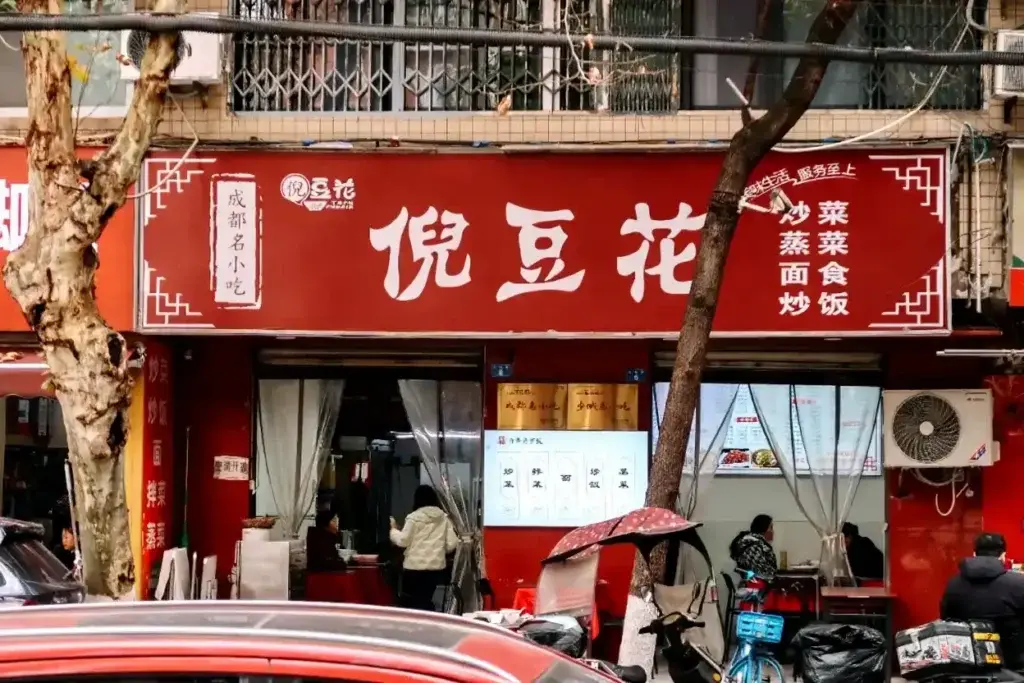
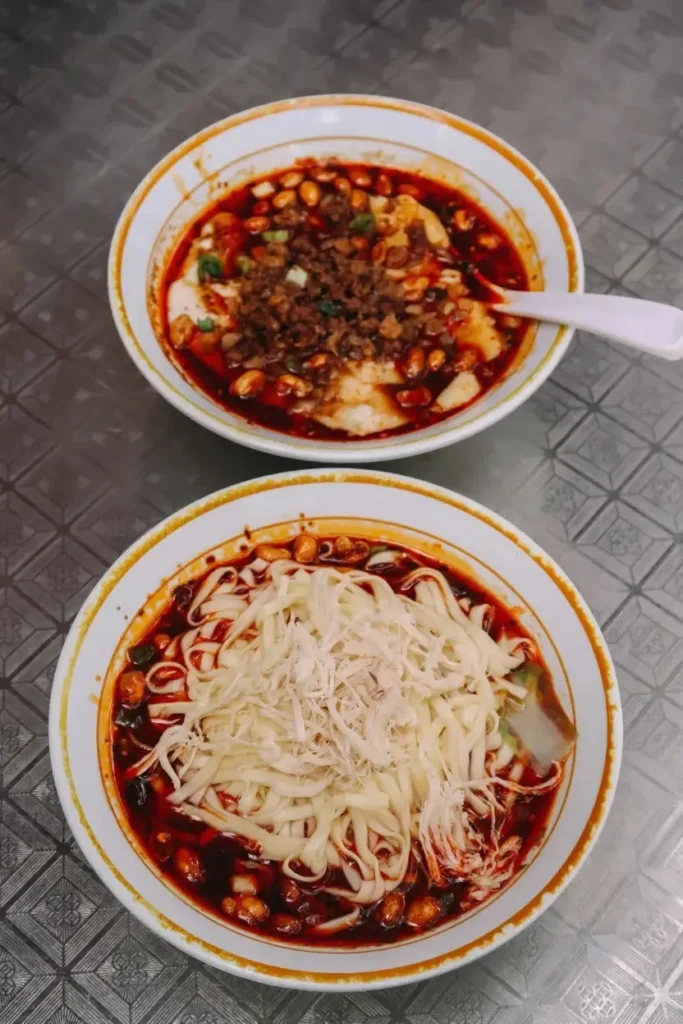
Fuzheng Bean Industry: A 28-year-old shop serving tender tofu pudding rice (8 RMB / ~US$1.10).
Local Delicacies:
Wangji Specialty Guokui: Crispy baked pastries with various fillings like beef (~10 RMB / ~US$1.40).
Xiaoyue Steamed Dumplings: This shop offers a great chance to try what Chengdu dumplings are like, with their juicy green pepper and pork fillings.
Zhou Ji Yanbian Beef and Donkey Meat: A nearly 20-year-old shop perfect for spicy dry-mixed beef.
Liujiu Braised Meat Shop: A local favorite for its flavorful braised spare ribs.
Essential Visitor Information for Wenshu Monastery
Address: No. 66 Wenshuyuan Street, Qingyang District, Chengdu (Google Maps Link)
Opening Hours: 8:00 AM – 5:00 PM daily (last admission at 4:30 PM)
Admission Fee: Free – No reservation required.
Suggested Visit Duration: 2-3 hours for the temple; a half-day if including the surrounding area and food.
Getting to Wenshu Monastery Chengdu
Subway: Alight at Wenshu Monastery Station (Line 1), Exit K, and walk about 200 meters.
Bus: Take bus No. 16 or 55 to Wanfu Bridge Station.
Taxi/Ride-hailing: Simply tell the driver “Wenshu Monastery” – it’s a well-known landmark.
Accommodation: For advice on the best areas, check out our guide on where to stay in Chengdu.
Important Tips for Your Visit
Respect the Space: Speak quietly and avoid disturbing those who are worshipping. Dress modestly.
Incense Etiquette: Free incense is provided at the entrance. Accept it with both hands as a sign of respect.
Stay Vigilant: Be wary of strangers outside the temple offering paid fortune-telling services.
Cash is King: Many small shops and vendors in the area may only accept cash (RMB).
Family-Friendly: The spacious courtyards are great for children. The nearby Sichuan Opera face-changing shows are also a hit with kids.
Plan Your Day
Half-Day Tour: Wenshu Monastery (2 hrs) + Red Wall photos (30 min) + Local snacks (1 hr). This fits perfectly into a packed Chengdu 3 day itinerary.
Full-Day Tour: In-depth temple exploration (3 hrs) + Wenshufang cultural street (2 hrs) + Teahouse experience (1 hr) + Food crawl (2 hrs).
Wenshu Monastery in Chengdu is more than just a temple; it’s a living, breathing cultural center. It’s a place where you can slow down, savor the moment, and experience the unique, leisurely charm that defines Chengdu. After exploring the temple’s tranquility, you can experience modern Chengdu by visiting a nearby commercial hub like Taikoo Li Chengdu.
Exchange Rate Note: US dollar amounts in this article are estimated at 1 USD = 7 RMB. Actual exchange rates may fluctuate. We recommend using Alipay, WeChat Pay, or local bank exchange rates for real-time conversion.



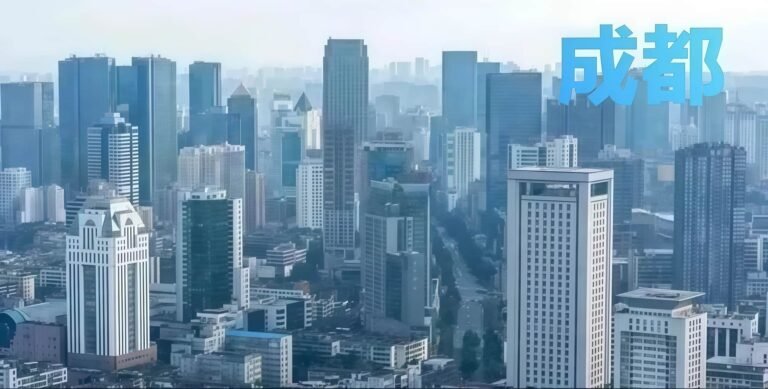

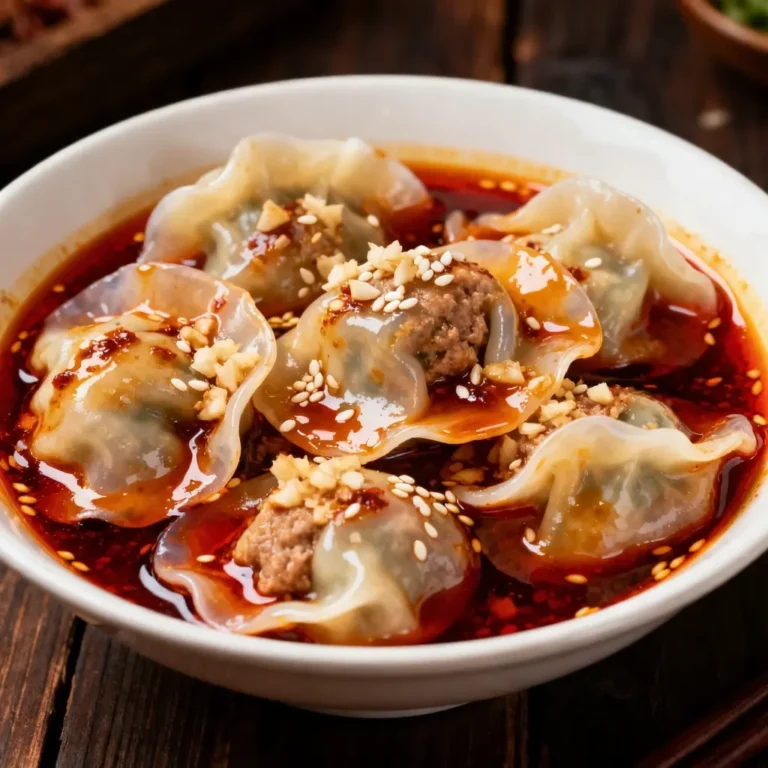

This is such a helpful guide! As a first-time visitor, I found the recommended tour route and the pro-tips for the red wall photos incredibly useful. Following your advice, I visited the teahouse and tried the Zen Yuan Maocai—both were fantastic experiences that made my visit truly special. A perfect blend of culture, peace, and delicious food. Thank you for the detailed information!
So glad to hear you had a wonderful time and found the guide helpful! You made some excellent choices. The vegetarian Maocai and a quiet moment at the teahouse are indeed local favorites for experiencing the monastery’s serene atmosphere. For future visitors reading this, I’d like to add that coming on a weekday morning helps you avoid the biggest crowds. Also, don’t miss the free incense ceremony at the entrance—it’s a beautiful way to start your visit.